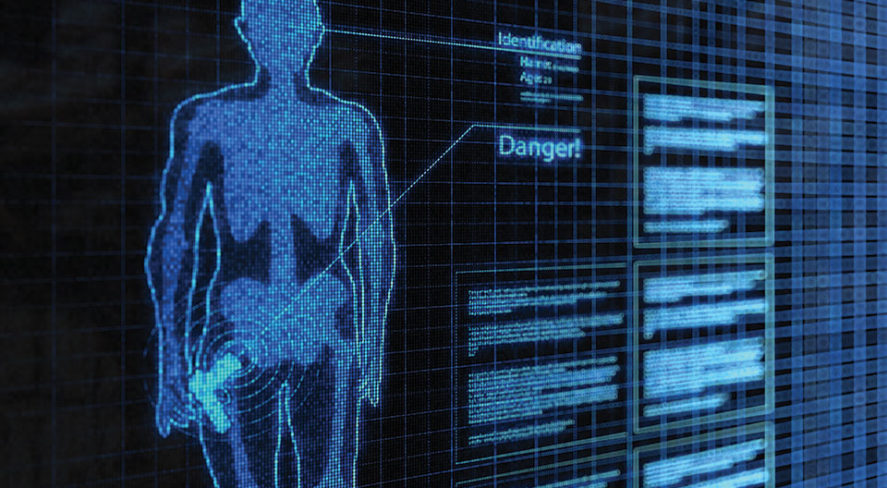Artificial Intelligence Will Revolutionize Physical Security: Intelligent, Autonomous Systems That Prevent Incidents Are Coming


Future security systems will be faster, more efficient and more agile to maintain safety in workplaces, on campuses, and at public venues.
The current state of security technology is often too disconnected to easily adapt to future needs. For security systems to respond to threats in a mixed physical and digital environment, these systems will need to evolve to become centrally managed, easy to integrate and built with predictive and preemptive automatic responses.
The security industry faces critical challenges, including a lack of connection between security solutions, inadequate return on investment and poor full-environment coverage.
Past: Forensic Security
Security systems of the past were often implemented independently of each other, and they cost more in terms of time, money and resources. These pieced-together systems were unable to grow with businesses and the result was diminished ROI and an increase in resource demand. They also lacked easy access to useful data, leading to a time-consuming process to gather information.
Previously, a convenience store owner might have had a video surveillance system that caught a person on camera during a break-in. But, by the time the authorities arrived, that person and the money were gone. It would take time to sift through the video and a careful eye to catch the thief on camera. Even then, the forensic data would be limited.
Today: Reactionary Security
Many establishments still use standard security solutions like video surveillance, access control and cloud management, but with better artificial intelligence (AI) analytics and integrations. However, these systems can operate more efficiently to manage physical security threats and improve resource usage. They often exist in silos, lacking connection to broader security technology. These limits increase response times for events and lengthen investigations.
In a situation where someone attempts to enter a building with a weapon, the technology exists to identify the weapon, but it takes time for security personnel to act on the event, especially if they need to first recognize the weapon from a control room or a video review after a physical witness raises an alert. While systems may be integrated and running analytics, human intervention is still needed to execute critical security responses. The weapon could be inside the building by the time security personnel respond, lock down the facility and alert occupants to the threat.
Future: Preventative Security
While security goals have not changed, technology has now evolved to enable autonomous responses and monitoring that not only improves the speed of security operations, but increases operational efficiency and creates safer work environments. Autonomous solutions free personnel from the tedium of monitoring and observation while being capable of doing much more than simply triggering alerts that notify people. They can activate security protocols and enable devices to communicate with each other to capture more information and keep people safe without human intervention. This autonomy frees up personnel to focus on strategy, decision making and human response.
In the future, a pan-tilt-zoom camera running AI analytics at an entry point will identify a weapon on a person, zoom in to get a closer look, and direct the access control system to lock the door to prevent entry. Simultaneously, it will send an alert to a security team, occupants or the authorities with this information and maybe even autonomously deploy a drone to find and track the person. In other words, this system will prevent a potentially harmful incident without human intervention.
What Does the Future Look Like?
The future of security will be focused on efficiently detecting threats with new technologies like drones and robots that can operate autonomously and integrate with more traditional security solutions like video surveillance, access control and other devices, leveraging sensor fusion. The future of physical security will result in multiple enhancements.
Improved Security Operations
This starts with leveraging block chain and PKI-based identity management for operators that covers both physical and logical access while addressing cyber and data privacy requirements.
Safer workplaces, faster investigations, real-time detection and easier processes are all the result of improved security operations. When solutions like video surveillance, access control and new devices such as robots and drones work together seamlessly in a digital environment, businesses are better able to manage security threats.
Command centers can leverage high-definition, zero-bezel displays as a flexible canvas for security, all made more intelligent by sensor fusion-driven AI for events. Responses to these events, conducted using natural language processing, natural language understanding, and combined gesture multi-touch control, make interactions fast and simple without the need for a keyboard and mouse.
Increased Operational Efficiency
Organizations are complex environments of people, processes and technologies. When processes are connected, they can provide predictive and preemptive security without human intervention, and operational performance improves. As a result, personnel can spend more time managing security responses and strategies and less on observation and identification.
Flexible On-Premises, IaaS and SaaS Options
Physical security will be able to do more with less, creating more cost-effective solutions and improving operating efficiency. Having the ability to choose between on-premises security, infrastructure as a service (IaaS) or security as a service (SaaS) allows businesses of all sizes and industries to take advantage of the full benefits of security models that are enabled through micro services and container-based deployments.
Safer Work and Play Environments
Maintaining the physical safety of workers, students and the public is critical to preventing loss of life and loss of business. Safety can be improved with more efficient, predictive security systems that allow for better training, compliance and monitoring, along with faster event responses. Leveraging technologies such as body-worn cameras and sensor fusion AI helps to create this reality.
Autonomous and Intelligent Security
Security will move beyond video surveillance and access control with features such as autonomous reporting, monitoring and response. Autonomous security systems will communicate with each other and with people and will act on their own to collect more information and trigger complex safety protocols.
Security technology will operate with predictive intelligence and will be deeply integrated with building systems, including HVAC, lighting, elevators and fire alarm and suppression. Remote monitoring capabilities will be the norm and this interconnectivity will bring the Internet of Things (IoT), 5G edge sensors, mobile devices, body-worn cameras, robots, drones, contextual conversational AI and augmented reality together to provide frictionless access, risk analysis, and predictive behaviors for proactive responses with real-time machine intelligence. Autonomous technologies will include:
- Drones: Identify threats from the air and deploy quickly to track in real time, collecting data that a person on the ground does not have. In addition, prevent unwanted drones from violating airspace while being able to track the location of drone pilots who violate safety and security rules.
- Robots: An extra set of eyes that can autonomously dispatch and fill in for a camera’s blind spot, gain close-up knowledge or evaluate a situation for safety before allowing human intervention. Additionally, provide facilities with security and safety inspections through sensors, security equipment status, audio alerts, measurement of temperature, humidity, combustible gases and air quality and more.
- Visual and Audio Detection: Detect threats like guns from visual captures and gunshots or glass breaks from sound captures. These events can then trigger doors to lock and drones to deploy, while simultaneously sending alerts to security personnel.
- Facial Recognition: Whether attempting to identify a person of interest or maintain health initiatives such as mask wearing, facial recognition allows for more efficient investigation and compliance enforcement. The technology can also prevent tailgate and passback violations.
- Facial Matching: Rapid, real-time alerts or quick forensic recognition provide the ability to allow entrance to authorized persons and block entrance to unauthorized persons.
- Reidentification and Intelligent Person Search: With a photo or snapshot, video system operators can locate a person of interest based on their appearance in just a few moments. Searches can also be performed from previously saved images and can be sorted by relevance or time, and selected clips can be saved and exported. In an emergency, live video can also be launched from search results.
- Intelligent Perimeter Detection: Detect objects that linger along a perimeter, cross a perimeter or enter a protected area with the ability to filter out noncritical threats such as animals.
- Area Occupancy: With AI technology, people counting can be automated and occupancy alerts can be integrated into a holistic system that can trigger a set of protocols and prevent violations from occurring.
- Traffic Monitoring: Traffic cameras can talk to each other to prevent car and pedestrian accidents, as well as to route emergency vehicles as they navigate congestion and intersections.
At a Glance: The Future of Physical Security
- Improved Security Operations
- Increased Operational Efficiency
- Flexible On-Premises, IaaS and SaaS Options
- Safer Work and Play Environments
- Autonomous and Intelligent Security
At a Glance: Autonomous Technologies
- Drones
- Robots
- Visual and audio detection
- Facial recognition
- Facial matching
- Reidentification and intelligent person search
- Intelligent perimeter detection
- Area occupancy
- Traffic monitoring
Mail Scan Use Case
Technology can detect a weapon on a person prior to entry into a business or other establishment. But these autonomous security solutions also help to maintain safety and security in other ways.
Corporations, for example, are already monitoring incoming packages with x-ray mail scan devices that allow for the detection of weapons. Millimeter-wave technology now enables detection of liquids, powders, weapons, explosives, radiation and other suspect materials without putting people at risk. With new, autonomous technology, a threat found by a mail scanner can trigger a series of events, including shutting off the HVAC system in the case of a potentially harmful airborne substance or triggering a building evacuation if an explosive device is found. The mail scanner can also connect to nearby cameras and deploy a security robot for a closer inspection of the threat.
This process ensures that people in the building remain safe while the potential threat is being evaluated. If a threat is confirmed, the work done autonomously has been recorded and can be used as forensic evidence in an investigation.
Cybersecurity and Physical Security
The landscape of IoT devices and sensors has expanded, which has created more potential for cyberattacks that affect physical security. A combined approach to cybersecurity and physical security may seem to increase the threat risk, but it actually provides extensive data to trace a threat to its origin and potentially neutralize it before a negative event occurs. In this way, technology can help ever-evolving systems of work and play to be safer and more efficient with less requirement for human intervention.
Understanding the impact that the digital space has on physical security allows the creation of new solutions for a safer and more autonomously secure future. These solutions will include better AI analytics, object classification, intelligent searches, frictionless access and more. Autonomous security systems will provide end-to-end security, free up personnel and trigger responses to maintain the level of safety that businesses need to move ahead in the age of digital transformation.
